Hello Flow-fans! I’d like to share some thoughts regarding the unique scrolling characteristics of Dark Flow, and how they evolved from the shoot-em-ups (shmups) of the past. Unlike other twitch-action shooting games, shoot-em-ups are (with occasional exceptions for bosses and special scenarios) generally defined by continuous scrolling of the world behind the playfield action. Other third-person shooting games (i.e. “run and gun” shooters like Contra, “arena shooters” like Geometry Wars) don’t operate the same way–they scroll under the direct or indirect control of the player. To see how shoot-em-ups became synonymous with automatically scrolling action, let’s go back to their origins…
Proto-shmups
The first shoot-em-up is a matter of some debate. Whether it was a true shmup or merely a “proto-shmup,” most can agree that the arcade classic “Space Invaders” was the ancestor of all the shooting games that came after it. However, Space invaders had yet to take two critical game design steps in the evolution of the shoot-em-up: it allowed player movement on only one axis, and it took place in a static environment.
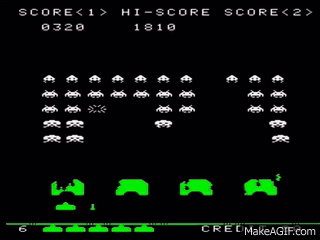
Soon after Space Invaders, the side-scrolling rescue/defense shooter “Defender” took on a second axis of player control (the defender player ship moves both up and down; as well as left and right.) It also introduced a scrolling environment for the player to fly around in. However, since this game scrolled only based on the player’s motion (and in both directions, no less) this game is merely a variant on the core shmup formula.
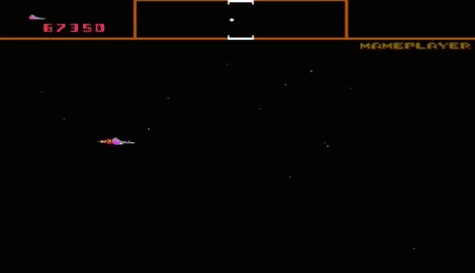
On another track, the early arcade sister-games Galaxian and Galaga introduced a simple scrolling background, making the player feel as if she was moving through an endless starfield. However, they preserved the one-dimensional player movement of Space Invaders, and as such these games feel particularly dated in the context of other early arcade shooters. Nevertheless, some still consider them true shoot em ups, given their scrolling behavior.
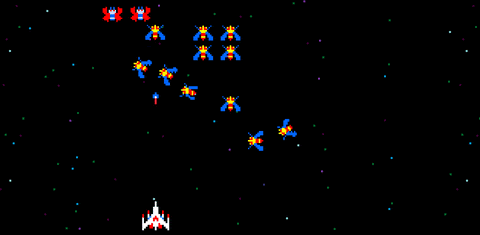
Vertical & Horizontal Scrollers
Soon, by taking both of these innovations (scrolling and 2-D movement)–shoot-em-ups began to be defined as games which are *both* automatically scrolling, and allow players to move in a two-dimensional play space. The first true shoot-em-ups (games like Xevious, 1942, Gradius, and R-Type) were only one of the evolutionary branches that came out of these early shooting games. In most cases, the primary point of differentiation between these branches was the scrolling direction. Shmups were either vertically or horizontally scrolling:
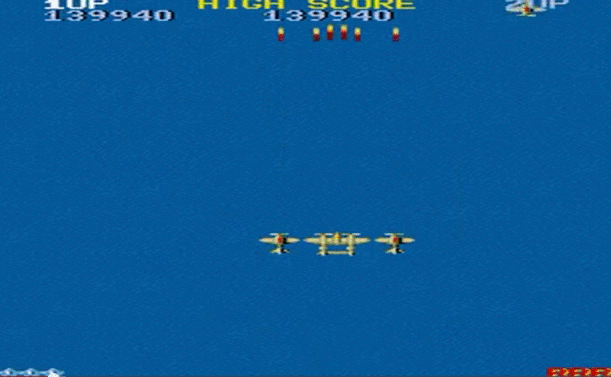
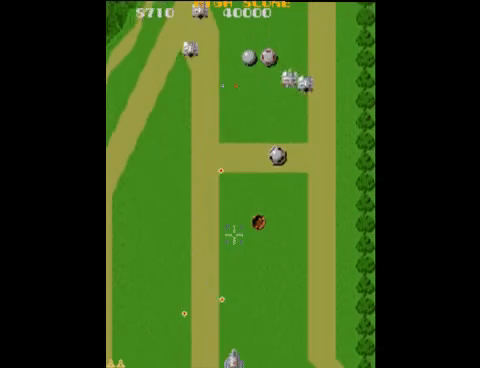
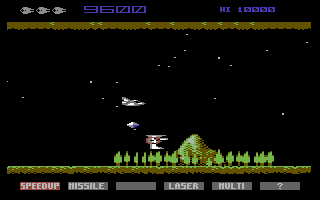
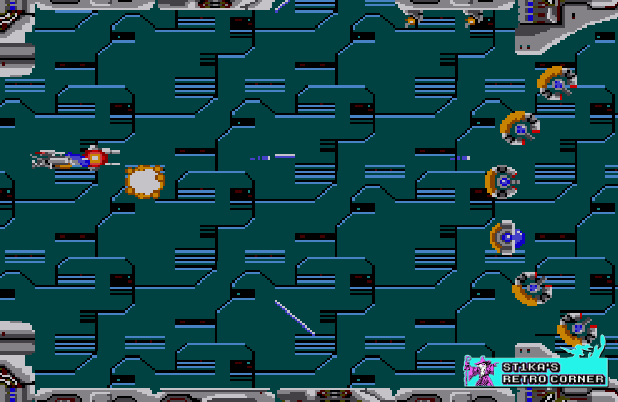
These examples illustrate that the ’80s proved the shoot-em-up genre had legs, well actually notably lacking pedestrian locomotion, but I digress. Beyond these standard vertical and horizontal scrolling shoot em ups, other branches on the tree of arcade shooting games emerged.
Rail Shooters
One such branch, the “rail shooters” saw titles like Space Harrier and After Burner. These games moved “into” the screen, creating pseudo-3D gameplay–control on a 2-D plane with enemies and bullets moving in a 3rd dimension. Likewise, the background environment appeared to “scroll” into the screen–in many cases using state-of-the-art (at the time) scroll scaling technology;
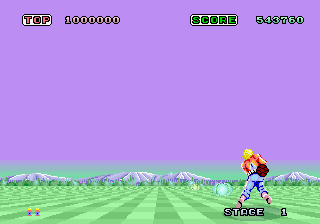
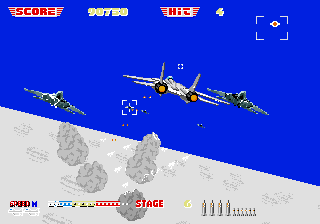
Tube Shooters
Another branch, “tube shooters” like Tempest and Gyruss also scrolled “into” the screen, but instead of a simulated 3D volume for enemies to move within, they utilized a 2D area from which the enemies attacked. Unlike other shmups, these games “wrapped” the 2D area into a cylindrical playfield–with a one-dimensional region at the leading edge of the cylinder. Despite these non-euclidean distortions, the fundamental nature of the play-space was identical to earlier shooters like Space Invaders or Galaxian.
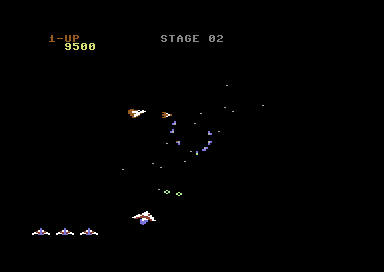
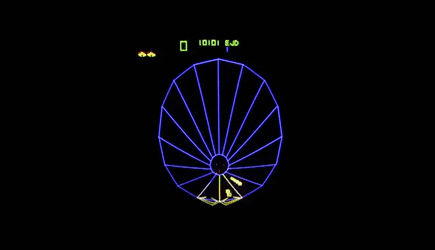
Uphill Shooters
A third branch, “uphill shooters” were a simple variant on vertically scrolling shmups that arose with the 3rd or 4th console generation– many were a way to integrate the new 3D polygon rendering systems. Uphill shooters like Silpheed and Raystorm adopted a horizontal scrolling pattern, but skewed the playfield relative to the camera to create a trapezoid-shaped playfield that introduced 3-D perspective to the gameplay:
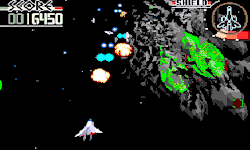
Isometric Shooters
Another 3-D perspective scrolling approach is the “isometric shooter” Zaxxon attempted a never-seen-again approach: the player controlled the ship’s movement on 2 axes while it scrolled in a third (orthogonal) direction. This was a novel concept, but it was extremely difficult and not very fun, requiring a UI gauge to help the player understand where the ship was in 3-space:
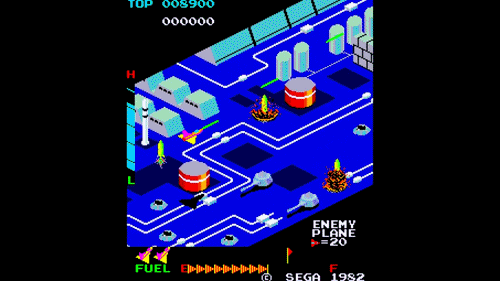
Later on, isometric shooters would abandon this wily 2+1 axis motion, with much better results. Viewpoint, was one such shooter, another is the long-overdue Zaxxon sequel: Motherbase 2000
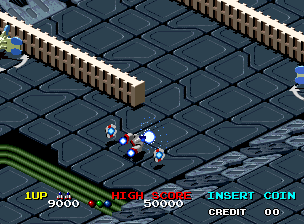
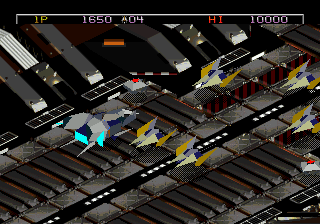
To review, early proto-shmups gave rise to an array of varied branches of the shoot-em-up lineage:
- Vertical Scrollers
- Horizontal Scrollers
- Rail Shooters
- Tube Shooters
- Uphill Shooters
- Isometric Shooters
Modern Shmups
Most of these genres have survived in one form or another all the way to the present day, represented by games like Starfox Zero, Geometry Wars, and Hyper Void.

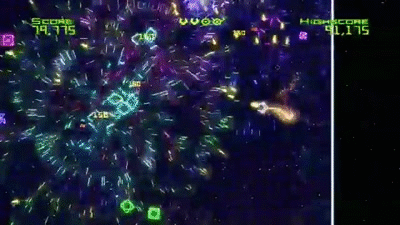

DarkFlow Scrolling
While several modern games still fall into these diverse sub-genres, the vast majority, almost all, shoot-em-ups stick to either horizontally scrolling or vertically scrolling gameplay.
One of the most innovative shmups of it’s time, the arcade/NES game Lifeforce (and it’s sister-game “Salamander” in Japan) were notable for having alternative levels in each scrolling direction. These few games were exceptions, however, as engine and design limitations made it much more viable to build an entire game to run in either vertical or horizontal configurations.
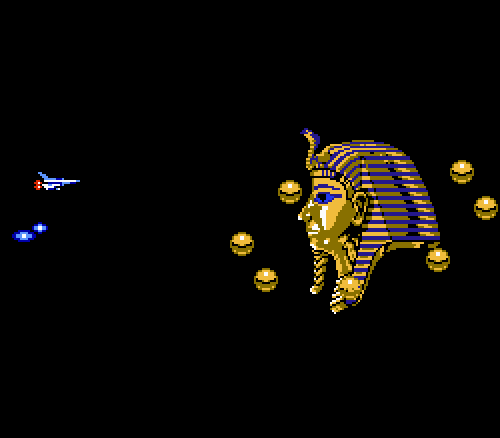
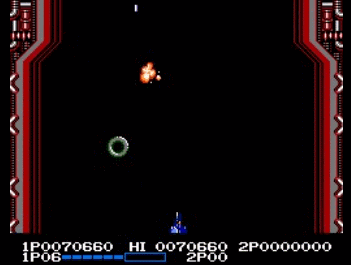
At the modern end of this spectrum, in one uncommon example we find the beautiful shoot-em-up “Astebreed,” which evolved the genre to scroll as a vertical, horizontal, or rails shooter:
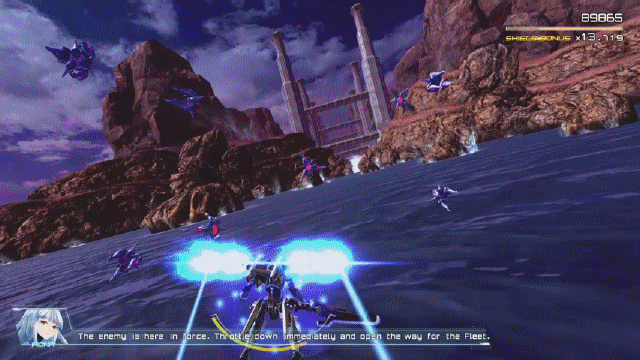
Dark Flow attempts to stand on the shoulders of giants at the end of this storied history of scrolling directionality and shooter innovation. We have relinquished any notion of fixed scrolling, and instead, allow the gameplay and narrative context to dictate how the player’s ship moves through space relative to the camera. At times it feels like a classic vertical scroller, at other times, it scrolls horizontally or even becomes a third-person rail shooter. Critically, the transitions between these independent states are all continuous, aiming to fuse the seamless cinematic narrative of a movie with the interactive engagement of the shmup genre. Take a look for yourself and let us know how we are doing:
Thanks for taking the time to follow this journey from the earliest non-scrolling proto-shmups to the cinematic interactive continuity of Dark Flow. Stay tuned for updates as we make progress on Dark Flow and can offer more refined examples of how the game will create this unique experience.